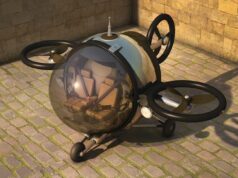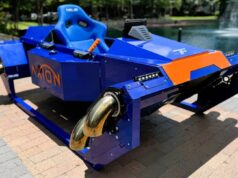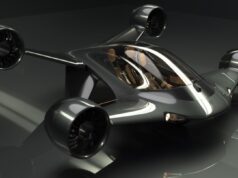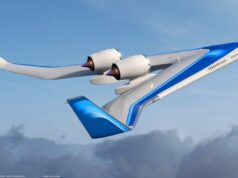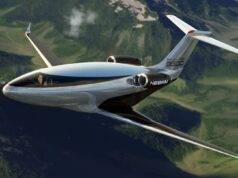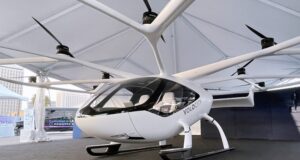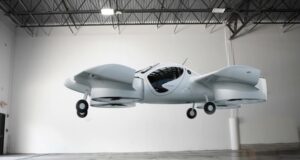To conclude the celebrations for the 60th anniversary of Renault 4, the car maker has decided to team up with motion design hub TheArsenale to create a futuristic showcar, reinterpretation of this iconic model.Renault has partnered with TheArsenale on this truly unique project, and the result is unprecedented.
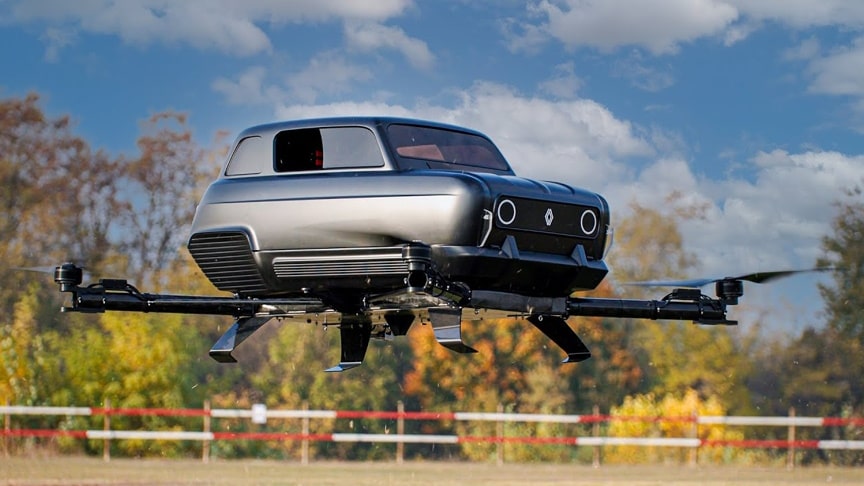
AIR4 is a symbol of independence and freedom, born out of the realisation that traffic is compounding, lives are grinding to a halt, and the world above us is unhampered. Thus, AIR4 claims the air as the new road of the future.Design wise, AIR4 has resulted in a reinterpretation of the retro icon by TheArsenale, far from the modern car design language.
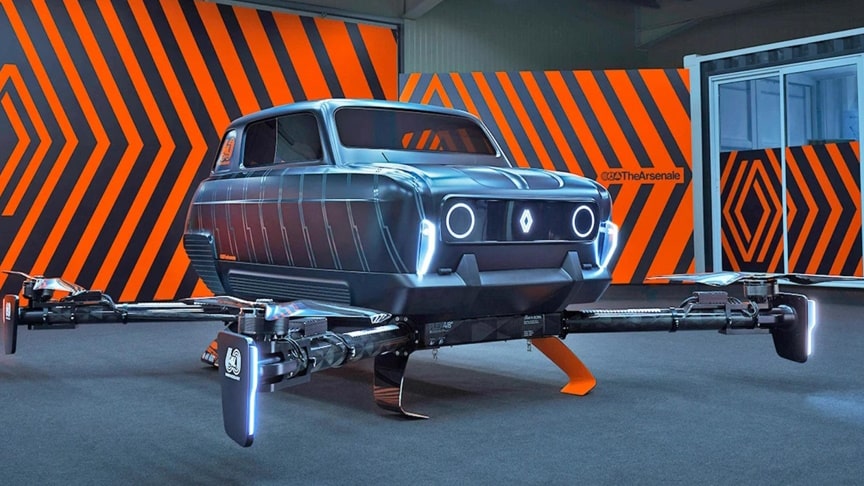
source-image: renault
The vehicle, entirely made of carbon-fiber, maintains the same lines and contained mass of the original 4L, yet presenting new dynamic capabilities. The rigidity has been completely revised to include new concepts such as thrust or lift, which required hours of calculations and tests.Drawing on generative design techniques using artificial intelligence, TheArsenale’s engineers were able to test terabytes of data to improve and fine-tune the designers’ ideas, even before starting the first real-world trials.
Advertisement
To drive around, AIR4 has no wheels. Instead, it features four two-blade propellers, one at each corner of the vehicle. The chassis sits in the middle of the rota frame, and the driver can access and take a seat in the utilitarian cabin of the vehicle by lifting the reimagined Renault 4 shell, which is hinged at the front.
From a technical standpoint, AIR4 is powered by 22,000 mAh lithium polymère batteries that generate a total power of 90,000mAh. The vehicle counts on an orizontal top speed of 26m/s, with a 45° inclination during flights, and up to a maximum inclination of 70°. It can fly as high as 700m with a take off speed of 14m/s, restained at 4 m/s for safety reasons, and landing velocity of 3 m/s. Last but not least, AIR4 offers a maximum vectorial thrust of 380 kilograms, that is to say 95kg per propeller.

